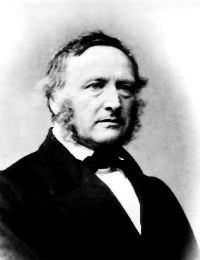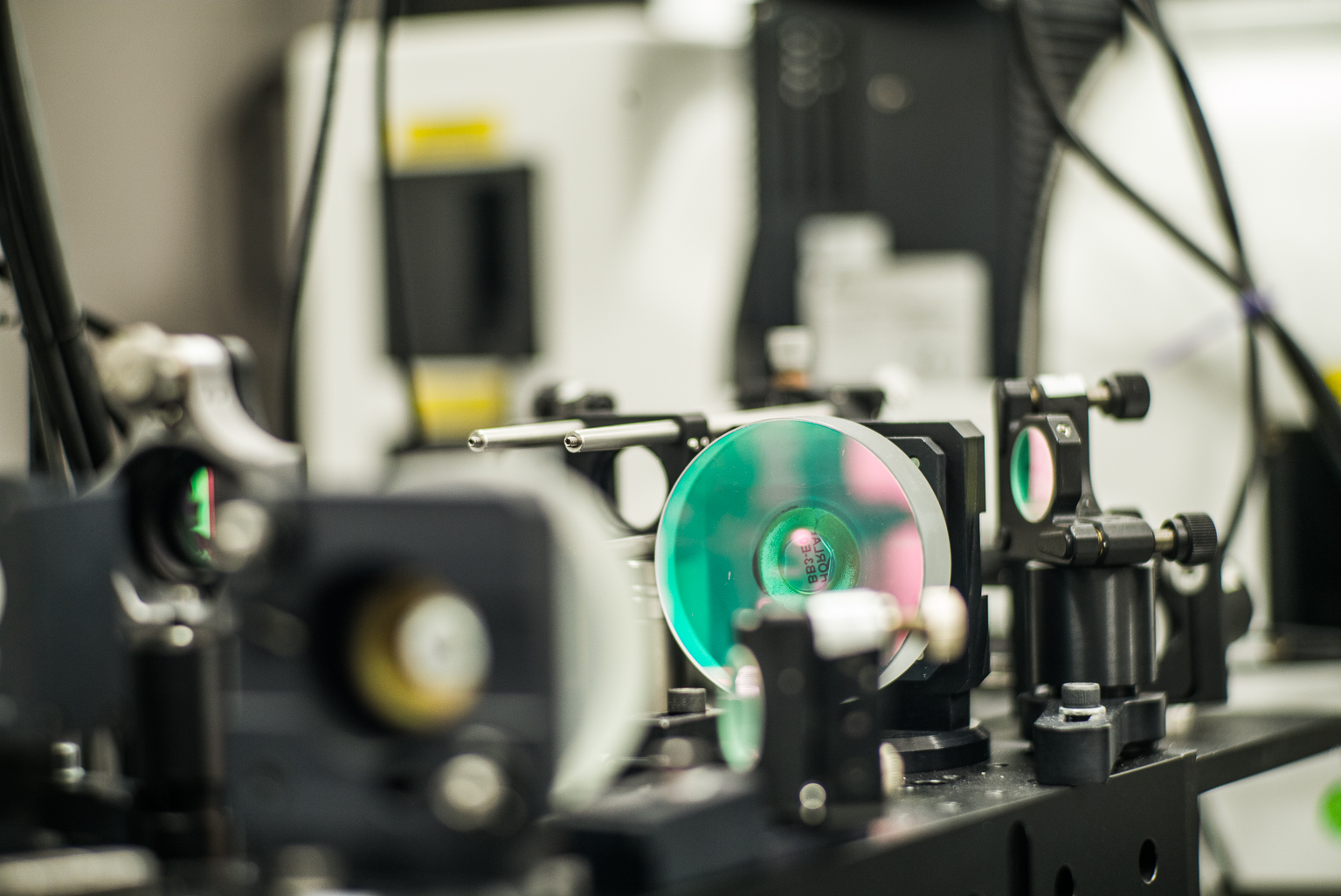-

In 1838, Heinrich Buff was appointed as independent chair of physics at Giessen. Buff, who has held the chair for three decades, is one of the most respected representatives of his field in Germany during this time. He used his personal funds to set up an auditorium and laboratories in a new addition of his private home. Only in 1844, the Hessian state started paying rent and replaced the furniture. His research focused on electricity, especially on electrolytes and on gas dynamics problems.
-

In 1879, Wilhelm Conrad Röntgen was appointed Buff's successor. In his most important work during his time in Giessen, Röntgen experimentally verifies Maxwell’s postulate of the displacement current in an experiment which is broadly regarded as refined model for the art of experimental measurements. Röntgen himself considered these experiments to be of greater scientific importance than the radiation he discovered in 1895, for which he received the first Nobel Prize in Physics in 1901.
-

Franz Himstedt was appointed as Röntgen's successor in 1889, vacating a full professorship in Darmstadt. He mainly investigated the relationship between electrostatics and electrodynamics, electromagnetism due to moving electrical charges, and electromotive forces.
-

Otto Wiener succeeded was appointed in 1895. His research culminated in the experimental detection of standing light waves. In 1899 Wiener moved to Leipzig.
-

Next, Wilhelm Wien came to Giessen leaving an extraordinary professorship at Aachen. During his short tenure of only two semesters we inaugurated the new physics building in 1900 and then went to Würzburg to succeed Röntgen there. In 1911, Wien received the Nobel Prize for his radiation laws.
-

In 1900, Paul Drude was appointed as chair. He was renowned for his works in the field of optics and electric wave. In particular, he applied Maxwell's equations to explain magneto-optical phenomena and worked on the relation of the dielectric constant with the optical refractive index. Presumably his most important work in Giessen concern the "electron gas in metals". In 1905, Drude accepted an offer from Berlin and moved there.
-

In 1905 Walter König received the professorship for experimental physics at the University of Giessen. König deals with many different areas, with optical, electrical and magnetic properties of solids, with hydrodynamics, electrical waves and meteorology.
-

In 1930, Walter Bothe succeeded König and stayed for 2 years. He received the Nobel Prize in Physics in 1954, 24 years after his most important discovery of excited atomic nucleus in Giessen.
-

In 1932, Gerthsen was appointed ordinarius professor of experimental physics. His research interest were fast collisions on atomic scale. Here, Gerthsens idea was a pole reversal of the ions in order to accelerate ions twice using the same voltage; this is the basic principle of a so called "Tandem" particle accelerator. He demonstrated the emission of characteristic X-rays if ions with sufficient energy collide with atoms or molecules. In 1939, he went to the First Physics Institute at the Humboldt University of Berlin.
-

In 1941, Wilhelm-Hanle became director of the institute. Hanle's research interests covered a broad spectrum: optical and electrical properties of solids, interaction of high-energy radiation with matter, plasma physics, and nuclear physics. He continued his nuclear spectroscopy work from his time in Göttingen investigating nuclear level crossing (“Hanle effect”).
-

Arthur Scharmann succeeded Hanle in 1969. Scharmann's research interests, like those of his predecessor, are very broad and lie in the fields of solid state physics, atomic physics, nuclear physics, and medical physics. Amongst others, he studies sputtering phenomena using ions, luminescence ib inorganic crystals, exoelectron emission, and solid state dosimetry. During his tenure the Giessen activities on ion thrusters began which are still used in interplanetary space travel today.
-

In 1996, Bruno Meyer was appointed chair of the Institute of Experimental Physics I. He turned the research focus of the institute towards modern solid state physics and materials science. This included establishing material growth of wide-gap semiconductors, characterization and the fabrication of prototype devices. Therefore, thin-film technologies (sputtering, gas phase epitaxy, molecular beam epitaxy etc.), a clean room for micro- and nanostructuring (photolithography and electron beam lithography) as well as extensive characterization facilities were established.














